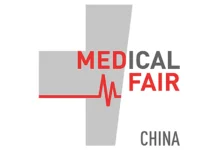As industry economics change, health care organizations are increasingly being pressured to provide financial transparency while improving the patient experience. Patient financial clearance (PFC) departments are increasingly under pressure to reduce costs and improve their own performance metrics. Yet it is difficult to improve baseline PFC key metrics such as days outs, denials, patient escalations, and write-offs without adding staff, an additional expense.
How can PFC departments reasonably achieve performance and productivity goals while still fulfilling their core functions? The first step toward PFC improvement is to understand how most PFC departments work, then sequentially adding measures to enhance PFC performance.
Understanding PFC
PFC departments, usually operating within a provider’s revenue cycle division, are typically resource-challenged to curtail internal costs. A PFC department’s greatest cost is staffing, since most authorizations require staff-conducted phone calls to payers. Furthermore, authorizations are often complex for PFC to obtain, since they are based on specific payer rules and valid for only a set period of time.
 PFC staff are also responsible for communicating the status of the authorization to not only the patient but also clinic staff. Given that a PFC department’s most important metrics directly pertain to patient health, it is imperative that PFC’s work is done in a timely manner and that financial status and payment are explained clearly to both the patient and provider, so that both parties can be educated in their decision-making process.
PFC staff are also responsible for communicating the status of the authorization to not only the patient but also clinic staff. Given that a PFC department’s most important metrics directly pertain to patient health, it is imperative that PFC’s work is done in a timely manner and that financial status and payment are explained clearly to both the patient and provider, so that both parties can be educated in their decision-making process.
The organizational structure of a PFC department can assist or impede its overall productivity, based on the PFC team’s technology, workflow, and communication. For example, keeping teams in siloes may make team members specialized in their work but it can also create difficulty in achieving a streamlined overall process, due to the number of handoffs required to complete simple takes. Factors such as these illustrate the need for PFC departments to emphasize continuous improvement and workflow “optimization” which aligns technology, people and processes.
Improving PFC Performance
PFC performance improvement starts with understanding the department’s technology limitations and exploring potential options to automate PFC functions. For example, technology to verify insurance and benefits should be considered to reduce manual intervention as well as optimizing work queues to improve performance. Most EMRs have integrated insurance verification tools which can be configured to maximize the organization’s payers.
In addition, PFC departments should consider implementing authorization automation tools. These tools allow users to map specific payer rules and automate the status of a payer’s website. Technologies such as these can significantly reduce errors and manual phone calls to payers. This allows an organization to expand its PFC services while not adding head count.
Organizations can also improve PFC performance by improving their operational alignment based on payer, service line or patient flow. Regardless of what type of operational alignment is employed, it should simplify information-gathering between PFC and clinical staff members, improve financial transparency and physician and clinical service levels, provide greater visibility into PFC metrics and reduce patient complaints about PFC.
For example, payer-based organizational alignment allows PFC staff to make multiple inquiries when talking with payers, as well as gain a deeper understanding on payer-specific rules. Service line organizational alignment allows PFC staff to better understand the organization’s workflow. Lastly, patient flow-based organizational alignment allows PFC staff to follow the patient through their patient journey throughout the health system.
 Lastly, clinical workflows such as treatment plans should be integrated with financial workflows such as authorizations. In most organizations, clinical and financial workflows are disparate, resulting in frequently clunky handoffs between these workflows, leading into miscommunication and potential conflict between clinical and PFC team members. Clinical staff members should understand financial workflows, and vice versa through group meetings and creating integrated workflows through joint working sessions.
Lastly, clinical workflows such as treatment plans should be integrated with financial workflows such as authorizations. In most organizations, clinical and financial workflows are disparate, resulting in frequently clunky handoffs between these workflows, leading into miscommunication and potential conflict between clinical and PFC team members. Clinical staff members should understand financial workflows, and vice versa through group meetings and creating integrated workflows through joint working sessions.
In addition, organizations should adopt an authorize-then-schedule (ATS) workflow instead of a schedule-then-authorize (STA) workflow. The key benefit of ATS is that a procedure isn’t formally scheduled until it’s been authorized, significantly reducing denials and allowing for greater PFC efficiency. In most cases, ATS does not impact physician or clinical care models. Furthermore, an ATS workflow reduces patient scheduling problems.
Conclusion
PFC optimization should be a major initiative in most health systems. PFC departments have the potential to create financial and clinical integration and be the center of the revenue cycle, helping manage and connect all of its aspects. A high-functioning PFC also likely means a happier and more productive workforce, as well as more satisfied patients.
















